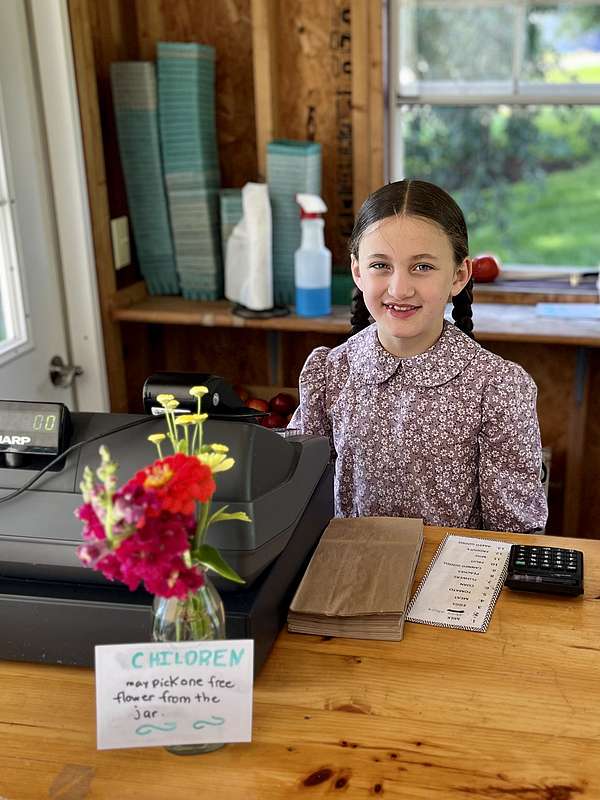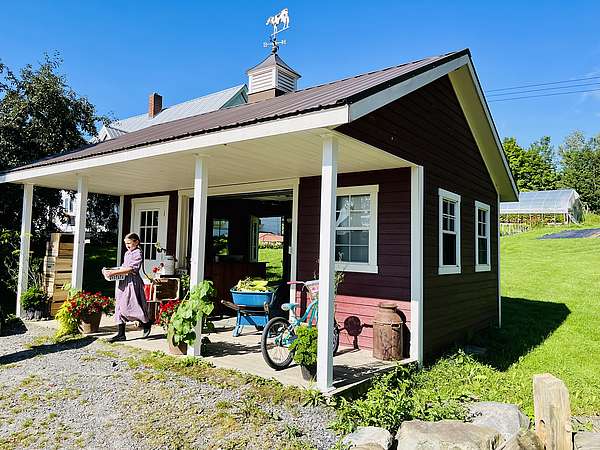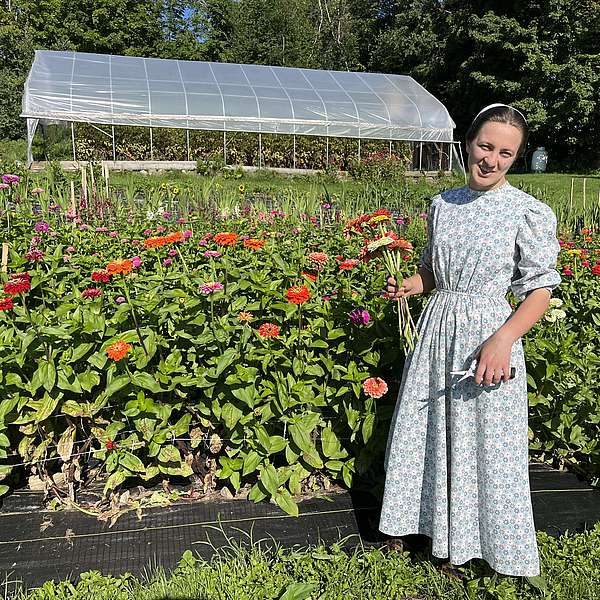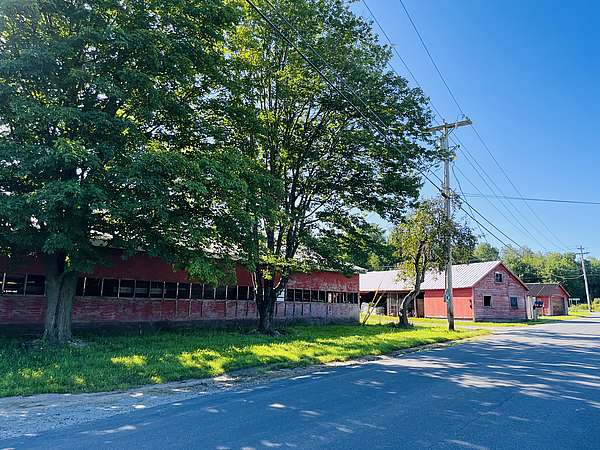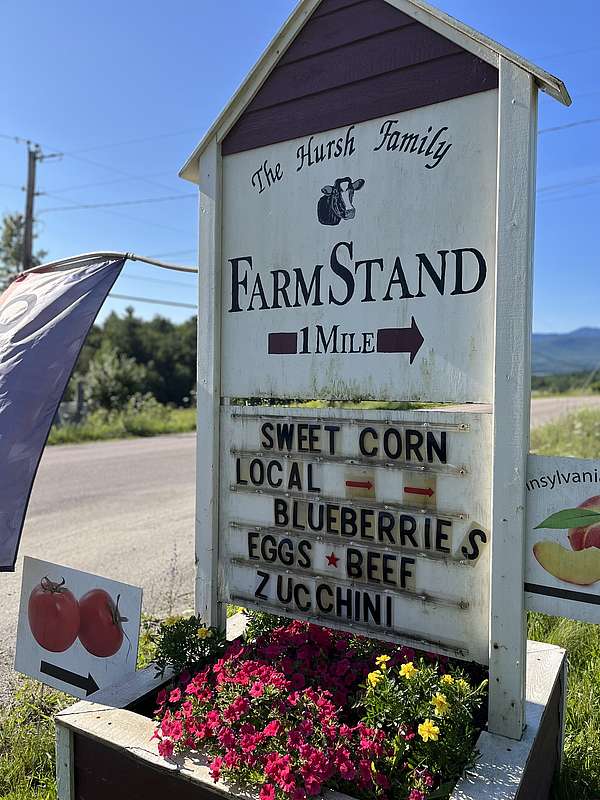Two families. One thought their farm would be lost. The other didn’t think they could ever own it. Conservation changed that.
There aren’t many local businesses that run on faith, strategic business design, and resilience, quite as much as farming.
With weather extremes on the rise, including erratic frosts and periods of heavy rain and then drought for weeks on end, farming is not for the weak of heart. Add the cost of land, with skyrocketing development pressure, and farming becomes even more tenuous.
Jesse and Marlene Hursh live this reality.
The Hurshes have leased land to run a small dairy farm on Lylee McKee Road off Stagecoach Road in Morristown for decades. Their family farm hosts a farmstand that’s been a popular spot for locals and visitors to pick up everything from raw milk and beef to eggs and vegetables for more than 20 years. Until two years ago, they also relied entirely on lease arrangements with other landowners in the area in order to have enough crop and pastureland to support their operation.
A tenuous way to live and do business
“The challenge with leasing is that unless it’s a 99-year lease, it’s very difficult to make long-term investments and improvements,” explained Marlene. “That’s a problem when you want to invest in soil health that takes years to improve, or upgrade milking facilitates that could take 10 years to pay off.”
To secure the future of their family business, they really needed a farm they could permanently call their own. But paying development prices for land they never intended to develop didn’t make sense.
That changed when the neighboring Valcour family conserved their 175-acre former dairy farm across the Valley on Randolph and Goetz Roads with assistance from the Vermont Land Trust and the Stowe Land Trust in spring of 2021.
"We wanted to preserve the years of work our parents put into managing the land and keep the farm a working landscape,” said Simonne Eisenhardt, one of seven Valcour children. “The Hursh family had rented fields from us for more than 12 years; we recognized their hard work and respect for the land and animals. Conserving the land was of mutual benefit. We were able to keep our parent’s legacy and prevent the development of the land on which we grew up and treasured."
Vermont Housing and Conservation Board provided most of the funding to protect the farm. Community members also donated funds critical to completing the project to Stowe Land Trust.
It’s been a game changer
“When we bought the Valcour Farm, our sons were already grown and were starting families of their own,” says Marlene. “It’s their wish to farm. And owning our own farm has given them many more opportunities and options than when we were leasing.”
Today, Jesse and Marlene’s sons can see a more secure future for themselves in farming. One son and his family are focusing on managing the dairy herd, which has expanded to 90-100 cows.
Over the next several years the Hursh family will be streamlining farming practices on the two farms, including investing in the Valcour farm that has now become their “home farm.”
Jesse and Marlene plan to relocate the farmstand from the rented land to the new, permanent, home farm location. They already have a small farmstand operating there from July to September.
“Now farming here is something our entire family can be part of for a long time, including our sons and their families. It’s a real blessing. Without conservation, there’s no way we would have been able to afford our own farm, and our family’s future of farming here in the Stowe Valley would have been increasingly uncertain,” said Marlene.
Farmers investing in the future
When the Valcours protected their land, they joined hundreds of other farm families in Vermont who have decided to conserve their land so that future farmers like the Hurshes can have access to the land, for generations from now.
The 217-acre Ricketson Farm, located between Route 100 and Stagecoach Road in Stowe, was conserved in 2022 much like the Valcour farm. Ken Ricketson partnered with Stowe Land Trust and Vermont Land Trust to conserve his family’s landmark former dairy farm with historic funding from Vermont Housing and Conservation Board, the Town of Stowe, hundreds of community members, and a significant donation from Ken Ricketson himself.
Ken Ricketson sold his own dairy herd in 2020 but has continued to live on the farm in the farmhouse where he was raised, and to lease his bottomland fields to other local farmers who are in desperate need of more land. The Hurshes currently grow hay, corn and beans on the Ricketson fields—an arrangement that works well for them and Ken.
“It’s great land,” says Marlene. “Farming the Ricketson land and knowing it’s protected, has allowed us to increase the efficiency of our operation and to grow our herd which is making the future of our farm more sustainable.”
More local farms, window of time
There are more than 30 other family farms in Lamoille County, like the Hursh Farm, that sell directly to consumers. These farms produce beef, berries, cheese, eggs fruit, honey, maple, meat, milk, vegetables, compost, firewood, flowers, hay, and more.
Many of these farms also face increasing development pressure, with rented land often sold at market—not agricultural—prices.
Nicole Valcour, another of the seven children notes that “conserving was a great option for our family. We were in a position to sell our farm and we did not want to see it developed. We knew that conserving it would ensure that the land would stay agricultural. We also knew that there would be a window of time where things would need to line up to make it all work. Timing is everything.”
We know we must be there to pick up the phone and help, just like when the Valcour family called, asking us to help them conserve their farm, sell it to the Hurshes, and honor both families’ legacies. That’s why Stowe Land Trust is planning on growing its team once we secure funding from community members and partners.
Simonne sums it up this way, “Once that land is gone, it’s gone. And so is the essence of Vermont. Farms for the future. The next five to ten years are going to really define what’s next for so many family farms in Vermont. We are grateful to have played a small role in conserving our farm and selling it to the Hursh family who will farm the land and grow crops for the community to enjoy."
"After our parents died, we struggled as a family with what to do with the land," says Jeannine Valcour, one of seven Valcour children. "Thankfully, my sisters came up with a plan—Nicole pushed us to look at the Land Trust and Simonne worked through the process. Once we had all the facts, the decision was easy. We wanted to do our part to keep Vermont’s open, agricultural landscape. Four of us still live in the area and we want to keep seeing cows by the road and eat the food grown by our neighbors. We didn’t choose careers in farming, but we wanted to preserve the land and legacy. Conserving gave us the ability to do that, and we are grateful we had the opportunity."
How you can help:
- Buy local. Visit the Hursh farmstand and others local farms. View a map of local producers here.
- Support the land trust. There are more than 300 farms and 60,000 acres of farmland in the Stowe region, many of which are at risk of being lost forever. Community support will allow us to build the team needed to ensure farming has a future in the Stowe region.
- Learn how local farms are part of the climate change solution. Healthy soils and climate-smart farming practices are part of Vermont’s climate strategy. Read Vermont's Climate Action Plan.
